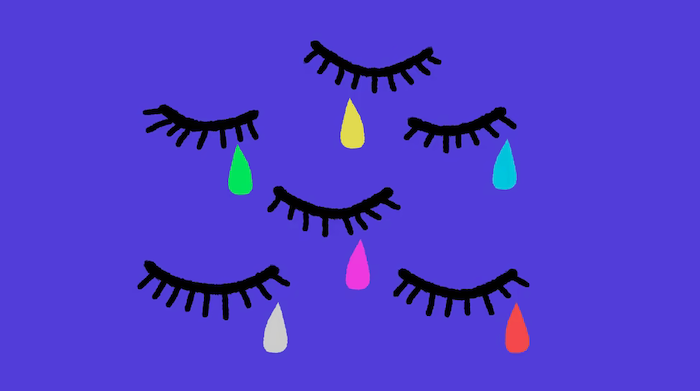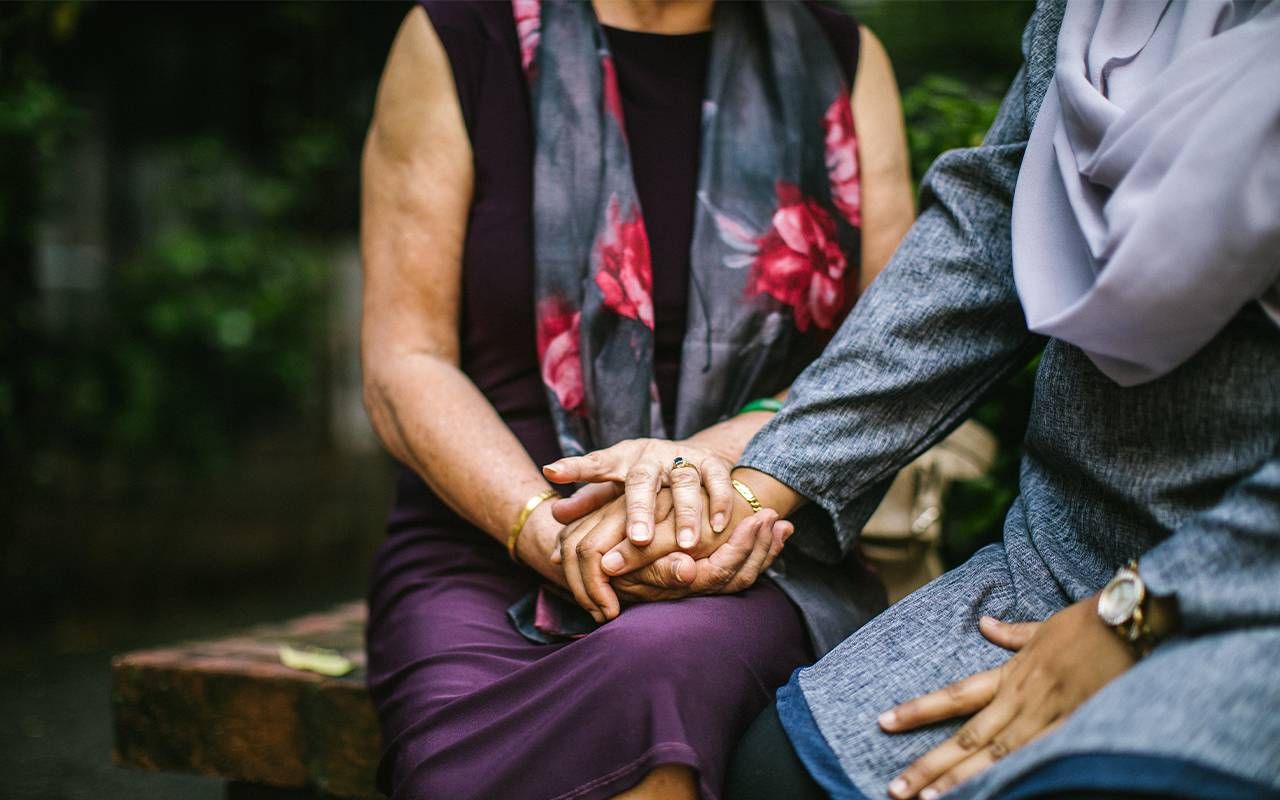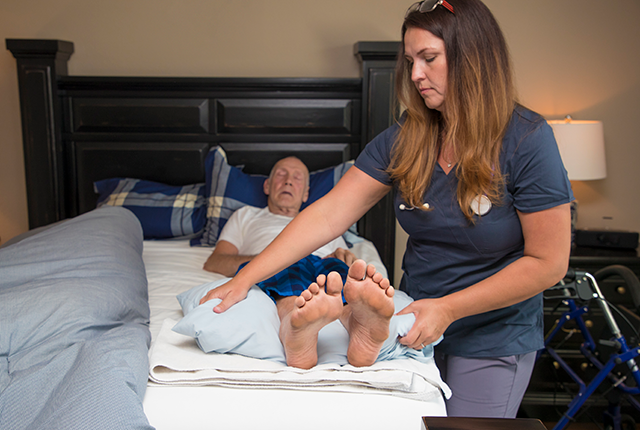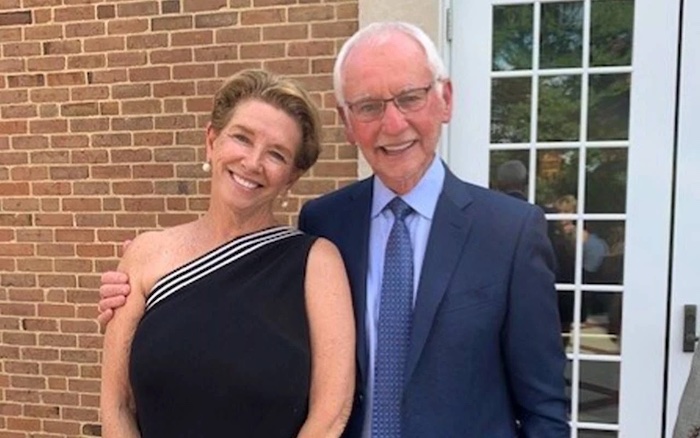— In 2009, health tech wearables hit the ground running and never looked back. Today, they’re still at the forefront of healthcare technology and expanding wildly like the old American west. Researchers and healthcare systems are excited about the promising ability of smart devices to monitor wellness and fitness, detect health problems early, and offer individualized advice like a personal coach.
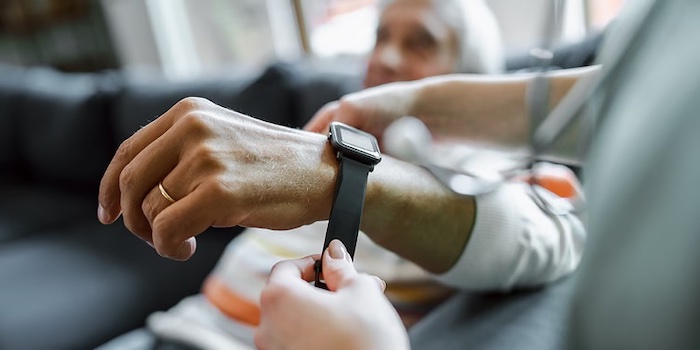
- Health tech wearables are devices like smartwatches, smart rings, smart clothing, smart patches, and implantables to monitor and support health and wellness.
- Wearable health devices do offer benefits to terminally ill patients but can also present some risks.
- Wearable devices may be more helpful for palliative care patients who still have years to live than hospice patients with less than six months.
- Smart devices could support the health of caregivers who have little time for their own wellness.
- Patients with a terminal illness must consider not only the benefits but also the risks before using a health wearable.
These devices are designed to support healthy living. However, how effective are they for dying patients? Can smart wearables help them, too?
What are “wearables?”
Two MIT professors created the first wearable technology in 1960. Their small computer fit into a shoe to improve their gambling outcomes at the roulette table. It took decades for technology to catch up with them.
In 2009, Fitbit hit the market as the first fitness tracking device, logging steps, distance, estimated calories burned, and sleep. Today, with 30% of Americans wearing health devices, people can buy smartwatches, smart rings, smart clothing, and even smart patches to monitor and support their health and fitness goals.
Healthcare wearable technology also includes devices implanted under the skin in various parts of the body. In the coming years, we may even wear electronic skin. Thin and stretchy like a temporary tattoo, “E-skin” is a clear, electronic adhesive placed on the skin to monitor your health.
Giving you minute-by-minute details about your wellbeing, wearable smart devices measure your health to monitor conditions and improve wellness. Some devices offer the ability to send this data to your doctor remotely.
Are wearables good for EOL patients?
End-of-life (EOL) is a term used for terminally ill patients who have six months or less to live. However, depending on where they are in their incurable health journey, patients with a terminal diagnosis can live for many years.
Palliative care is a specialty designed to care for seriously ill patients. It’s proven to help them live better and longer. Hospice is a type of palliative care for patients during their last six months.
Researchers are beginning to study smart devices for palliative care patients. Yet many palliative specialists are skeptical of using wearables for patients whose goal isn’t health progress but the quality of life in their remaining days.
In the end, as with any new technology, wearables offer both benefits and risks for EOL patients.
Benefits for hospice patients
When seriously ill patients enter their last six months of life — becoming “hospice eligible” — they no longer focus on treatment and recovery.
Most hospice workers stop checking vital signs, blood work, and other precise details of disease progression. They also remove as many medical devices as possible to “de-medicalize” the dying process. Instead of curing the disease with treatment and procedures, they help the patient live the best they can for their final months. They focus on symptom management, spiritual care, mental health counseling, end-of-life wishes, and companionship.
“Devices are a part of the medicalization of death. Unfortunately, in some cases, like advanced cancer, smart devices could cause over-treatment. When a cure is no longer possible, over-treatment increases patient suffering.”
Rebecca Gagne-Henderson, PhD, ACHPN
For smart devices to support the de-medicalization of end-of-life care, they would need to focus on the quality of life and comfort rather than improvement.
In 2021, Frontiers in Digital Health published a proof-of-concept article on a smart patch that would monitor dyspnea — shortness of breath — one of the most common symptoms of dying patients. Placed on the patient’s chest, the patch senses distressed breathing.
Though it’s a worthy concept, few healthcare teams need a monitor to assess dyspnea in an EOL patient. To a nurse or a certified nursing assistant, labored breathing is easy to identify and treat.
Veteran caregivers know there’s a risk of monitoring a device instead of the patient. While monitors are helpful and even vital in some circumstances, they can distract caregivers from carefully assessing the patient with their unique symptoms and needs.
Then again, the smart patch may support medically untrained caregivers at home by helping them identify breathing difficulties in their dying, unresponsive loved one. It’s possible a smart device could help teach them when to give comfort medications or reposition the patient.
However, monitors can also distress family members and patients with obsessive monitoring rather than peaceful, simplified care focused on the patient’s comfort.
Other useful wearables for end-of-life patients are devices that predict depression and anxiety. Mental wellness is a main concern for EOL patients. Some have difficulty expressing sadness and worries, and many healthcare workers are too busy or afraid to talk about it with their patients.
Furthermore, a smart device could help monitor a patient’s mental health symptoms — whether in a hospital or at home — and notify their loved ones or care providers.
Ideally, someone in their final months always has loved ones close by to assess their wellness. This relationship, as opposed to wearable technology, is the best treatment for the anguish of dying.
Unfortunately, however, many people still die alone — most without hospice care. Perhaps wearables could help palliative care teams remotely monitor patients dying without loved ones and trigger home visits when they need them.
Benefits for terminally ill patients
Patients can live with incurable diseases for years after their initial diagnosis. Wearables for this population are more promising than for hospice patients with less than six months to live.
Chronically ill patients dread another hospital admission. A 2019 study found that health tech wearables may improve the outpatient monitoring of cancer patients. The device could detect a decline in a patient’s condition and send the data to a doctor, catching the issue much earlier than the typical trip to the emergency department.
This early catch supports patient comfort and reduces costly readmissions for the patient and the health system. Data collection could also improve telehealth visits by recording vital signs and other assessment data before or during appointments.
Wearables may also improve care for patients with severe cardiovascular diseases and reduce their healthcare costs.
In 2021, a team of researchers assessed the relevance of medical wearables for the healthcare industry. When healthcare teams paired smart devices with relational coaching and support, 71% of patients achieved their blood pressure goal compared to only 30% who reached it without wearables and coaching.
Scientists say wearable health devices that gather cardiac data like heart rate, blood pressure, and electrical activity can help monitor the condition of severe cardiac patients. Implanted devices may eventually monitor heart failure patients, predicting negative trends and reducing hospitalizations.
Smart wearables also improve the early detection of infections like Covid-19. A study of the Oura wearable ring found that it detected a Covid-19 infection 2.75 days earlier than when most people seek testing.
Risks of wearables for EOL patients
Palliative care and hospice patients are uniquely different from healthy people and those with curable illnesses. As a result, we need more research on wearables in the end-of-life setting.
Palliative experts say constant monitoring may create problems for EOL patients, like causing false hopes, obsessions with health monitoring, or depression over lack of improvement.
Wearables could also distract from essential end-of-life goals such as enjoying time with loved ones or pursuing lifetime dreams during their final days or years.
Furthermore, smart devices are still developing. Their relevance and accuracy are improving, but many challenges still exist for using them in healthcare, like paying for the devices and integrating the data into the healthcare system.
The most concerning problem with digital health technologies, in general, may be the lack of research about security issues, data rights, and ethics of their use, as a 2021 review reported. It’s still a wild frontier tempting developers with power and dollar signs.
Nevertheless, smart wearable devices will likely become the norm in most patient situations. Studies show wearables are most effective in a close relationship with the patient’s healthcare team. This is especially true of people with terminal illnesses as they face unique symptoms and emotional suffering along their disease journey.
Caregivers can benefit from wearables
Caring for terminally ill patients is stressful, putting caregivers at risk of ignoring their own health to focus on their sick loved ones. Caring for caregivers is a major factor in patient care.
Wearables excel at health monitoring and motivational cues. Smart devices for caregivers could be the most effective use of wearables as they care for end-of-life patients.
Things to consider for EOL patients
If you or a loved one is facing a terminal illness and considering a wearable device, keep these thoughts in mind.
First, the device should help you become more in tune with your body — not less — to the point where you start to sense issues without the device.
Second, before buying a wearable health device, check with your physician about the type of monitoring most helpful in your unique situation.
Third, check your emotional response to the data, alerts, and motivational cues the device gives you. If it increases your stress levels, consider changing your use of the device or stopping altogether.
Most importantly, be sure it supports your quality-of-life goals as your disease progresses. As with all technology, it should improve your life rather than worsen it.
Most people are aware of wearable devices for monitoring health and fitness goals and workouts. However, with today’s technology, wearable medical devices can be used for patients nearing the end of life to help monitor vital signs and alert caregivers to a problem. These kinds of devices are meant to complement medical attention. They should not be a substitute for the personal, caring medical support that people with terminal illnesses need most.
Complete Article ↪HERE↩!

